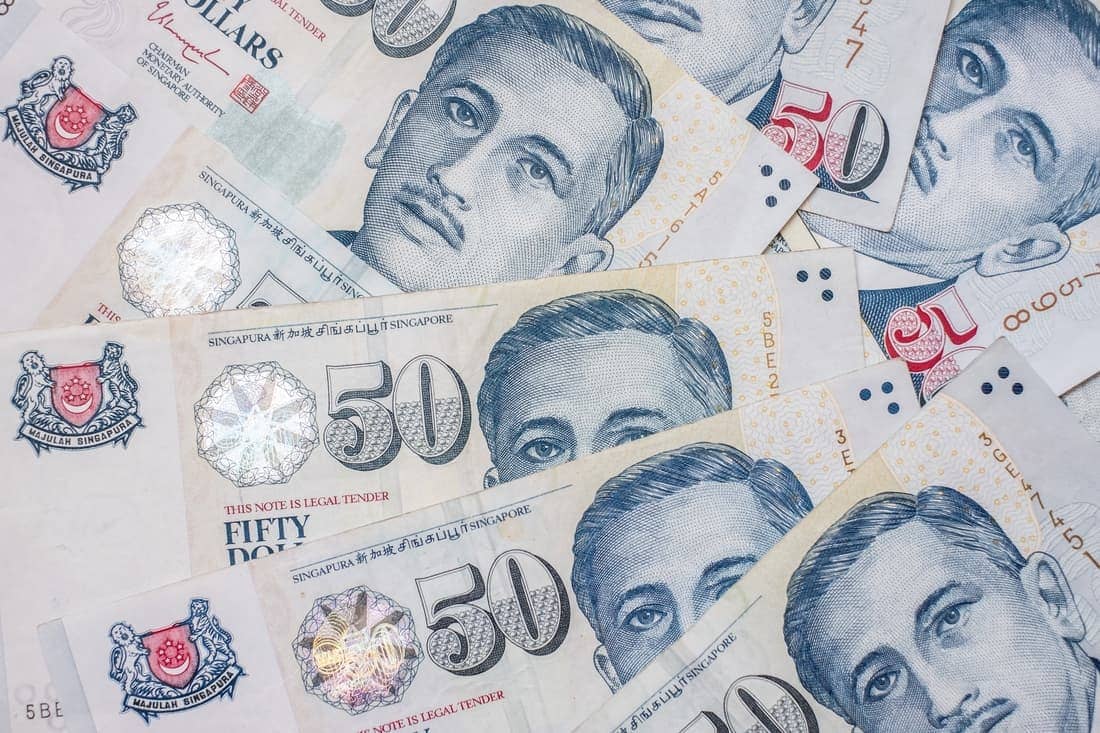Singapore Currency: A Guide to the Singapore Dollar
The Singapore dollar is one of the world’s youngest currencies, as it has barely existed for over five decades. Yet, even in that short time span, the Singapore currency has become one of the most traded currencies in the world – currently ranking at no. 13.
There are many reasons for the popularity of the Singapore dollar, including its strength and stability. But how did it become so strong so quickly? In the article, we will answer this question and provide more insight into Singapore money, however, we should start with the basics.
Singapore Dollar Basics
The Singapore dollar is issued and regulated by the Monetary Authority of Singapore – the central bank and primary monetary regulatory unit of Singapore. The ISO code of Singapore’s currency is SGD and the symbol is S$. 1 SGD is subdivided into 100 cents.
Singapore Dollar Coins and Banknotes
Singapore coins come in denominations of 1, 5, 10, 20, and 50 cents and one SGD. Singapore dollar banknotes are issued in denominations of 2, 5, 10, 50, 100, 500, and 1000 dollars. 10 000 SGD notes existed until recently, but the MAS discontinued them in 2014 because of fears of money laundering.
While still in circulation, the 10 000 SGD note was the most valuable banknote in the world.
The first series, called the Orchid Series, was issued in 1967 and the latest is from 1999, called the Portrait Series. Paper SGD banknotes are relatively quickly being replaced with newer polymer banknotes.
Commemorative Banknotes
The MAS has also issued many commemorative banknotes – the first commemorative series was issued in 1990 to celebrate the 25th anniversary of independence. Each banknote of this series is overprinted with the date ‘9 August 1990’.
The latest commemorative note is a 20 SGD bill from 2019, issued to celebrate Singapore’s Bicentennial. The front depicts Yusof Ishak, the first president of Singapore, and the previous Supreme Court and City Hall.
Many commemorative banknotes have high collector’s value, but they can also be redeemed for face value. The newer bills are mostly commemorative polymer notes and paper commemorative notes are issued rarely.

Origins of Singapore Currency
Singapore’s currency shares a similar origin to other Southeast and East Asian currencies that were issued in British territories, like Hong Kong’s currency. For a lot of its history, Singapore was a trading port and the Spanish-American silver dollar was commonly used.
In 1819, Singapore became a British trading post and in 1826 the Straits Settlements were established – the separate settlements of Singapore, Penang, Malacca, and Dinding that became British territories.
The Straits Settlements started minting their own version of the Spanish-American dollar, called the Straits dollar. The Straits dollar lasted until 1939 when it was replaced with the Malayan dollar. The Malayan dollar, in turn, was replaced with the Malaya and British Borneo dollar in 1953.
Singapore gained self-governance in 1959 and four years later joined the newly established federation of Malaya, while continuing to use the common currency. However, in 1965 Singapore was expelled from the federation and became an independent country, but still didn’t have its independent currency.
Finally, in 1967, Singapore started issuing the Singapore dollar, although it was still exchangeable at par with the Malaysian currency until 1973.
The Singapore Dollar
When the Singapore dollar first entered into circulation, it was pegged to the British pound at a rate of £1 = S$ 8.57 and briefly to the US dollar, at a rate of $1 = S$ 3.06. Then, in 1973, it was pegged to an undisclosed trade-weighted currency basket.
Finally, in 1985, the Singapore dollar was allowed to float within an undisclosed range against a basket of currencies of Singapore’s competitors and major trading partners that is monitored by the Monetary Authority of Singapore. This is the system that is still in force today.
Ready to sell?
Are you ready to sell your currency? Stop waiting and request a Shipping Kit. We will provide everything you need to ship and receive funds for currencies you own.
Modern Singapore Currency and the Economy
Singapore is one of the world’s largest financial centers and a popular destination for foreign investors. In 2021, Singapore ranked second in GDP per capita and the Singapore dollar ranks no. 13 in currencies traded by value, right in front of the Norwegian krone, according to the latest Triennial Central Bank Survey.
All of this helps make the Singapore dollar a strong and stable currency.
The Currency Interchangeability Agreement Between Singapore and Brunei
Brunei Darussalam and Singapore have had a monetary agreement (the Currency Interchangeability Agreement) since 1967 which allows the currencies of the two countries to be exchanged at par and without charge.
The Brunei dollar is customarily accepted in Singapore and vice-versa. There is even a commemorative 20 SGD banknote issued in 2007 to celebrate the 40th anniversary of the agreement. A parallel commemorative 20 Brunei dollar banknote was issued at the same time and the two notes have an identical reverse side.
Can You Exchange Singapore Currency in the US?
Yes, you can exchange over 20 exotic currencies online at US First Exchange, including the Singapore dollar. You can buy and sell Singapore dollars and we will deliver high-grade, crisp banknotes to your address of choice and all of your packages will be fully insured, regardless of how much currency you exchange.
Ready to buy?
Are you ready to buy your currency? Stop waiting and request a Shipping Kit. We will provide everything you need to ship and receive funds for currencies you own.


